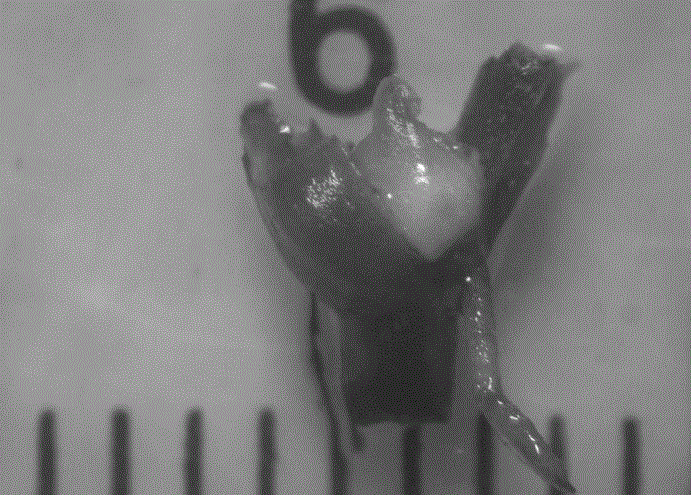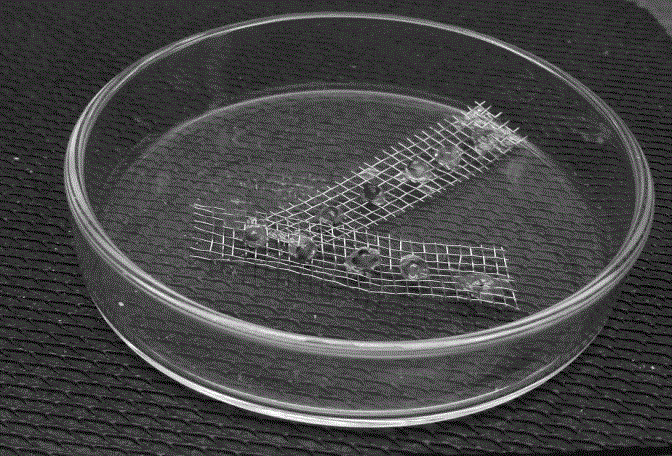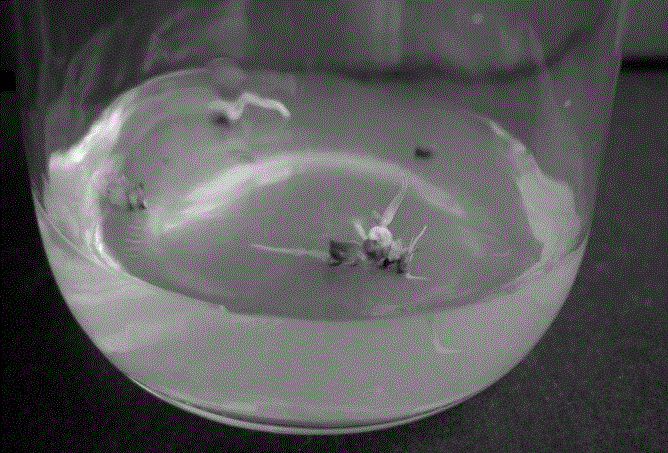Cryopreservation and recovery culture methods for dioscorea alata protocrom-like bodies
A cryopreservation and protocorm-like technology, which is applied in the field of plant cell engineering, can solve the problems that the construction of large potato protocorms has not been reported, and achieve stable and reliable cryopreservation methods, reduce damage, and restore good growth conditions
- Summary
- Abstract
- Description
- Claims
- Application Information
AI Technical Summary
Problems solved by technology
Method used
Image
Examples
Embodiment 1
[0027] Embodiment 1, the acquisition of big potato sterile seedlings and the induction of protocorm-like
[0028] refer to figure 1 and figure 2 As shown, take large potato seedlings with jointed stems, rinse them repeatedly under running water for about 1 hour, disinfect with 70% alcohol for 1 min, 0.1% mercury chloride for 10 min, rinse with sterile water several times, and inoculate in the 2mg·L -1 BA, 0.5mg·L -1 Axillary buds were induced on MS medium with NAA. The culture temperature was 25±2°C, and the light was 12 h d -1 , light intensity 36µmolm -2 the s -1 . Axillary buds were excised and inoculated in 0.1 mg·L -1 NAA was subcultured on MS medium. Subculture every 3 months. Take the aseptic tissue-cultured seedlings of large potato that have been subcultured for more than 3 months, cut the stem section with axillary buds about 1 cm above, and inoculate them with BA1mol·L -1 , NAA 0.2mol·L -1 ,GA 3 0.5mol·L -1 MS medium, wherein, the MS medium contains...
Embodiment 2
[0029] Embodiment 2, the gradient pre-cultivation of large potato class protocorms
[0030] Get the stem section of the protocorm with class class gained in embodiment 1 and change into containing calcium chloride 0.1mol L -1, sucrose 0.3mol L -1 And abscisic acid 0.5-5mg·L -1 After culturing on the culture medium for 3-7 days, transfer to the medium containing calcium chloride 0.1mol·L -1 , sucrose 0.7mol L -1 And abscisic acid 0.5-5mg·L -1 The medium was pre-incubated for 16 hours in the dark.
Embodiment 3
[0031] Embodiment 3, the device fixing of big potato class protocorm
[0032] refer to image 3 As shown, the steps for fixing the protocorm to the loading strip are as follows: peel off the protocorm of 2-3 mm under the dissecting microscope, dip the protocorm in 2-4% calcium ion-free sodium alginate solution with tweezers, Then place them neatly on 5mm×20mm metal mesh loading strips, with 5-10 protocorms on each loading strip. Then immerse the loading strip with protocorm-like 0.1-0.3% calcium chloride, 0.8mol·L -1 Sucrose and 2mol·L -1 Glycerol MS liquid medium, after 10-30min fixation, put the loading strip on sterile filter paper to absorb excess liquid.
PUM
 Login to View More
Login to View More Abstract
Description
Claims
Application Information
 Login to View More
Login to View More - R&D
- Intellectual Property
- Life Sciences
- Materials
- Tech Scout
- Unparalleled Data Quality
- Higher Quality Content
- 60% Fewer Hallucinations
Browse by: Latest US Patents, China's latest patents, Technical Efficacy Thesaurus, Application Domain, Technology Topic, Popular Technical Reports.
© 2025 PatSnap. All rights reserved.Legal|Privacy policy|Modern Slavery Act Transparency Statement|Sitemap|About US| Contact US: help@patsnap.com



